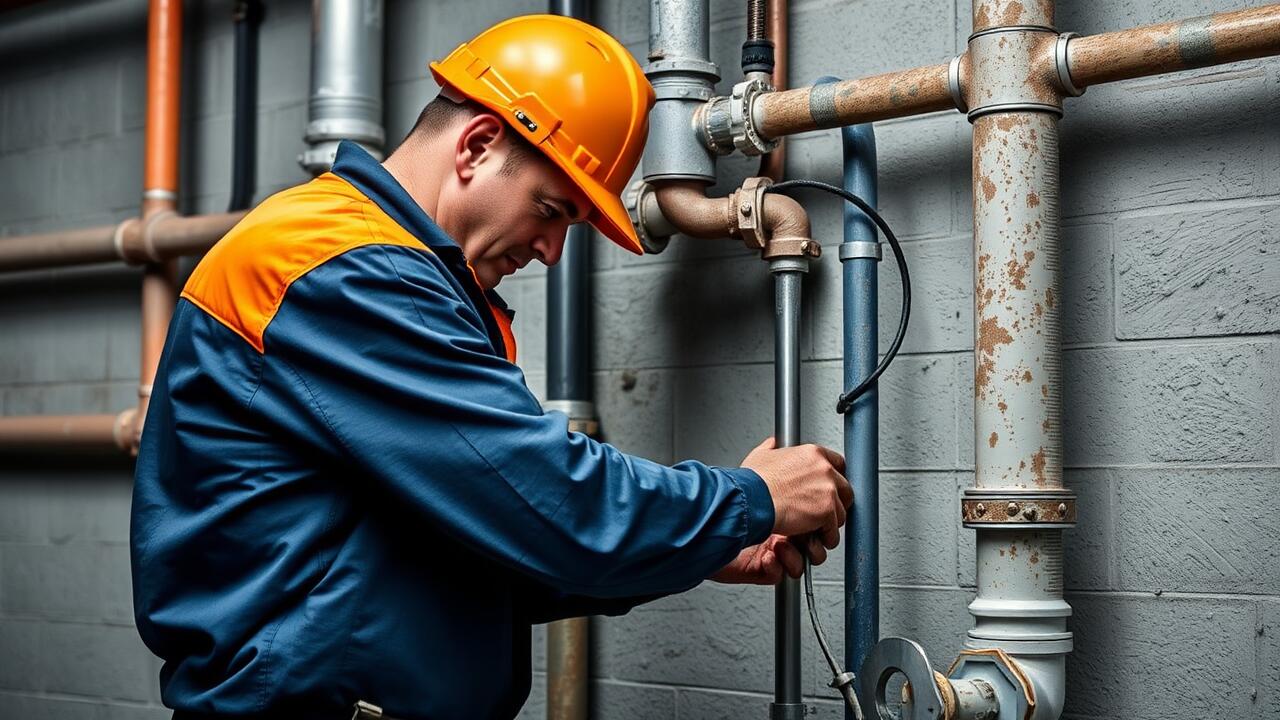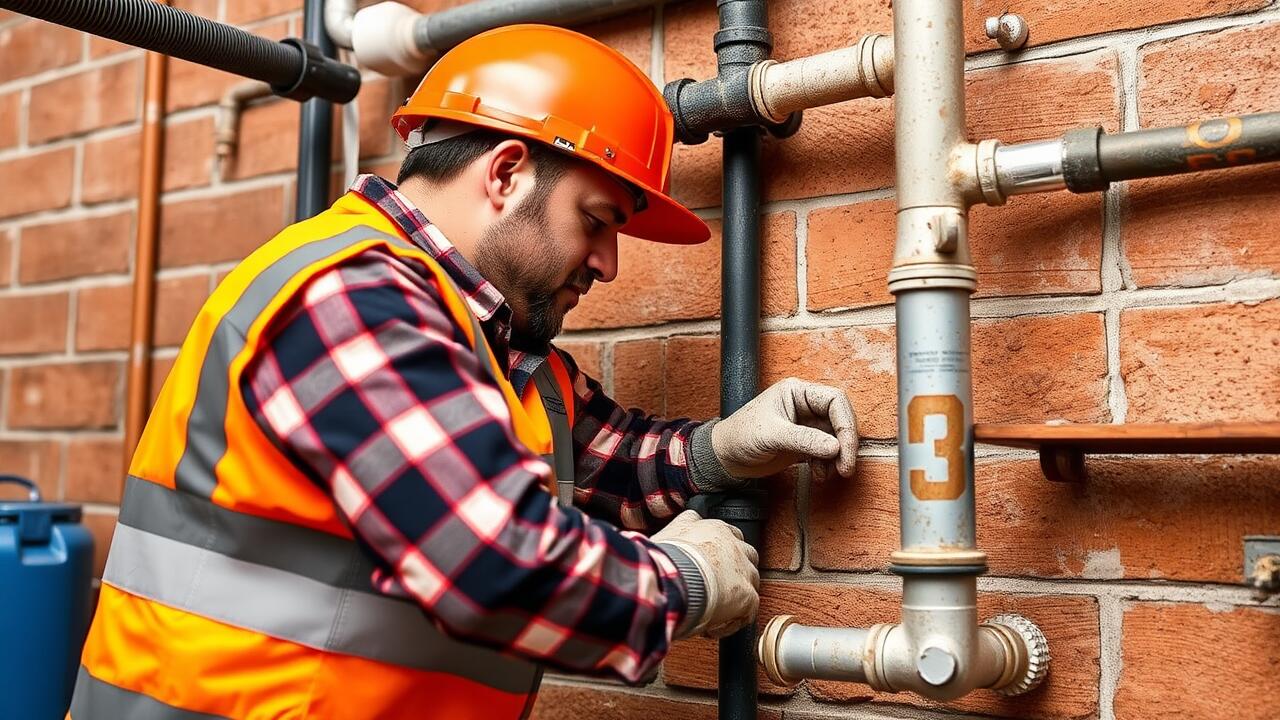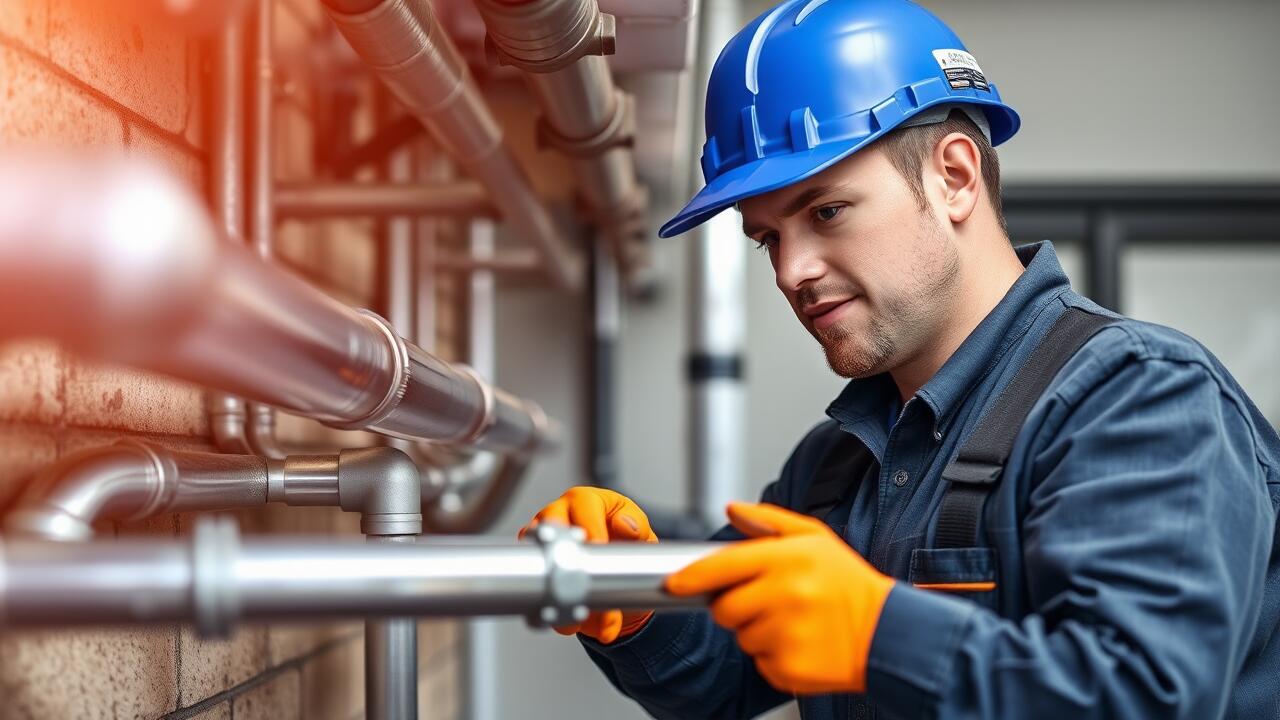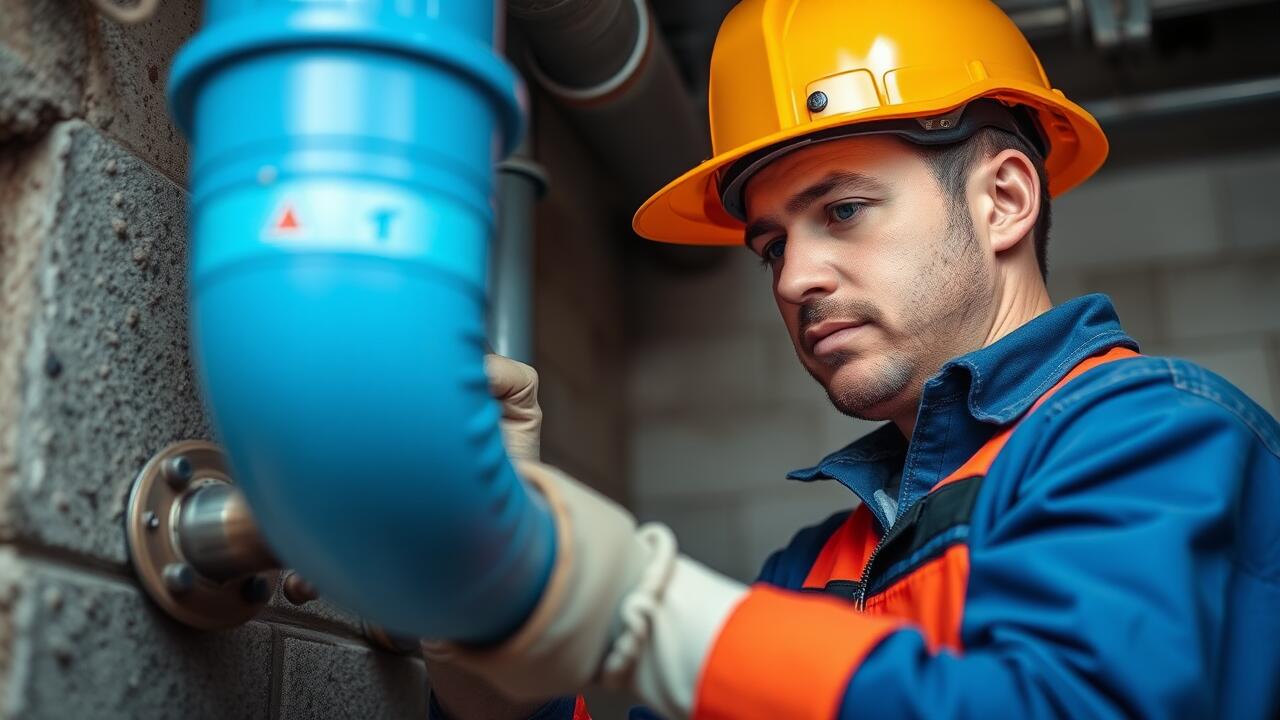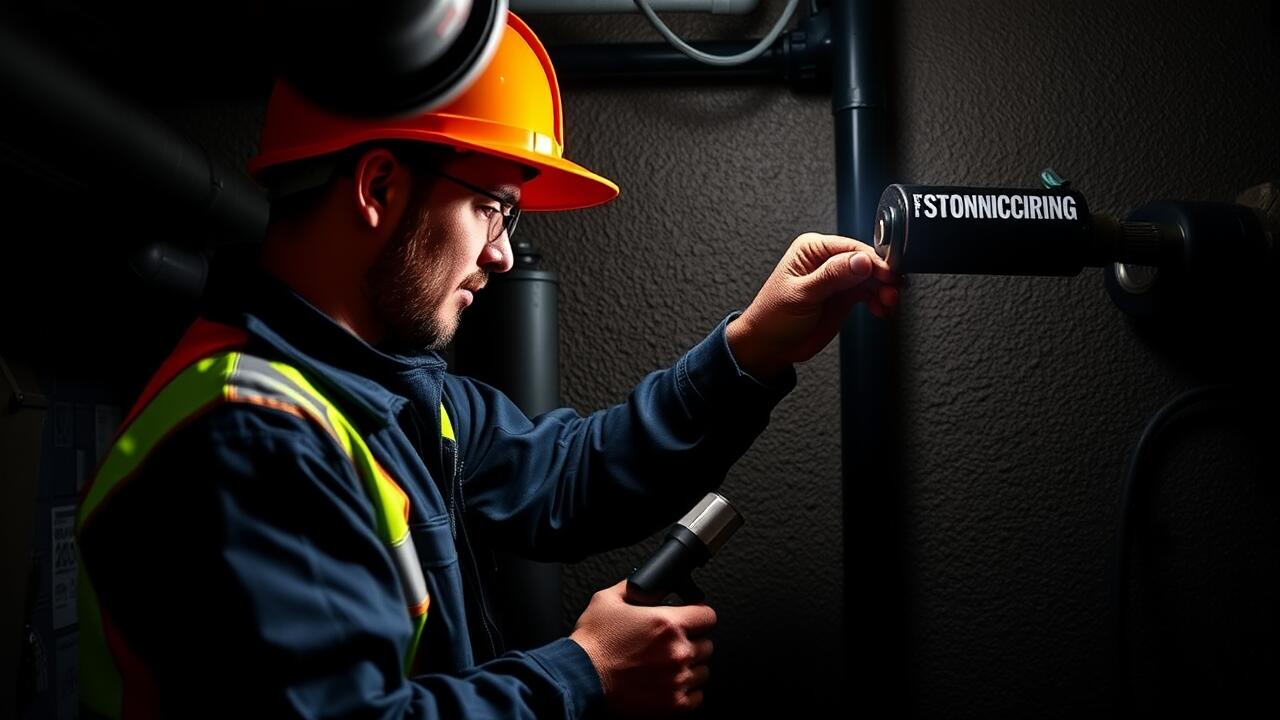
Maintenance of Galvanized Steel Pipes
Galvanized steel pipes are known for their strength and corrosion resistance, but regular maintenance is essential to ensure their longevity. Inspecting pipes for signs of rust or deterioration can help identify potential issues before they escalate. Keeping the pipes clean and free of debris prevents blockages that can lead to pressure buildup, which may eventually result in leaks or ruptures. Homeowners often search for "Pipe installation near me" to connect with professionals who can assist in maintenance efforts or replacement when necessary.
Proper winterization is also crucial for maintaining galvanized steel pipes, especially in colder climates. Freezing temperatures can cause water within the pipes to expand, leading to cracks or breaks. Insulating exposed pipe sections and using heat tape can help prevent damage. Additionally, monitoring water quality will assist in detecting any changes that may affect the pipes. Regular check-ups by skilled professionals can mitigate issues caused by wear and tear, ensuring pipes remain functional for an extended period.
Best Practices for Ensuring Durability
Proper installation is crucial for the longevity of galvanized steel pipes. Ensuring that the pipes are correctly aligned during the installation process minimizes the risk of stress and unnecessary pressure points. Selecting qualified professionals or reputable service providers for pipe installation near me can greatly enhance the accuracy and reliability of the installation, reducing potential future issues. It's also advisable to use appropriate fittings and seals to prevent leaks, which can lead to corrosion over time.
Regular inspections serve as a preventive measure to maintain the durability of galvanized steel pipes. These inspections can help identify any signs of wear, cracking, or corrosion early on. Additionally, applying a protective coating can further shield the steel from moisture and contaminants, extending its lifespan. Addressing minor repairs promptly can stave off more significant damage down the line, preserving both structural integrity and functionality.
Environmental Impact of Galvanized Steel
Galvanized steel pipes have raised environmental concerns due to the processes involved in their production and disposal. The galvanization process typically requires energy-intensive methods which can contribute to greenhouse gas emissions. Additionally, when these pipes reach the end of their lifespan, improper disposal can lead to environmental degradation. However, many manufacturers are increasingly focusing on reducing their carbon footprint through improved manufacturing practices.
The sustainability of galvanized steel is aided by its recyclability. Scrap galvanized steel can be repurposed, minimizing waste and conserving resources. Many local industries are beginning to recognize the importance of recycling operations. For individuals searching for "pipe installation near me," considering the environmental impact of the materials used can influence choices and ensure that the installations are more sustainable.
Sustainability and Recycling Options
Galvanized steel pipes offer several sustainability advantages due to their long lifespan and recyclability. When the pipes reach the end of their functional life, they can be processed at recycling facilities. This minimizes landfill waste and reduces the demand for new raw materials, contributing to a more sustainable construction ecosystem. Such practices are increasingly important for builders and contractors committed to minimizing their environmental footprints.
For those exploring new projects, searching for "pipe installation near me" often yields contractors experienced in sustainable practices. Many of these professionals emphasize the use of recycled materials in their installations. Choosing galvanized steel can be a step towards eco-friendly construction, ensuring that materials are utilized efficiently while still providing the durability necessary for various applications. This approach not only benefits the environment but can also enhance the overall value of the construction.
Cost Factors Associated with Galvanized Steel Pipes
The cost of galvanized steel pipes can vary significantly based on several factors. These include the diameter and thickness of the pipes, as well as the quality of the galvanization process. Larger pipes typically command a higher price due to the increased materials and production costs involved. Another consideration is the geographic location, as shipping and transportation costs can impact the overall price of the pipes. Homeowners and contractors often search for "pipe installation near me" to find local suppliers, which may offer competitive pricing compared to national distributors.
Labor costs also play a crucial role in the overall expense associated with galvanized steel pipes. Installation requires skilled labor to ensure that the pipes are properly fitted and sealed, which can add to the project cost. Additional expenses may arise from the need for specialized tools and equipment required for installation. It is essential to budget for these factors to avoid surprises during the construction or renovation project. Understanding these cost dynamics can help in planning and ensuring that the installation process runs smoothly.
Pricing Variations Based on Type and Size
Pricing for galvanized steel pipes varies significantly based on both type and size. Standard sizes such as ½ inch or ¾ inch, commonly used for residential plumbing, typically cost less than larger pipes required for industrial applications. The thickness of the pipe also influences pricing, with heavier gauges attracting higher prices due to increased material costs. Local market factors additionally affect pricing, making it important for consumers to compare rates from different suppliers.
In terms of specific applications, specialized pipes designed for unique functions often carry a premium. For example, pipes intended for high-pressure systems or those with advanced coatings to resist corrosion may come at a higher cost. Potential buyers searching for options may want to look up "pipe installation near me" to find local distributors who can provide quotes tailored to their specific needs and project requirements. These variations highlight the importance of understanding both the application and the market when considering galvanized steel pipes.
FAQS
What are galvanized steel pipes?
Galvanized steel pipes are steel pipes that have been coated with a layer of zinc to protect against corrosion and rust, enhancing their durability and lifespan.
How can I maintain galvanized steel pipes?
Regular inspections for rust and damage, proper cleaning, and applying protective coatings are effective maintenance practices for galvanized steel pipes.
What is the environmental impact of using galvanized steel?
Galvanized steel has a relatively low environmental impact due to its durability and recyclability. The zinc coating helps prevent corrosion, which can reduce the need for replacements and minimize waste.
Are galvanized steel pipes recyclable?
Yes, galvanized steel pipes are recyclable. The zinc coating can be removed during the recycling process, allowing the steel to be reused in various applications.
What factors influence the cost of galvanized steel pipes?
The cost of galvanized steel pipes can vary based on factors such as the type of steel used, the size and thickness of the pipe, and market fluctuations in raw material prices.
